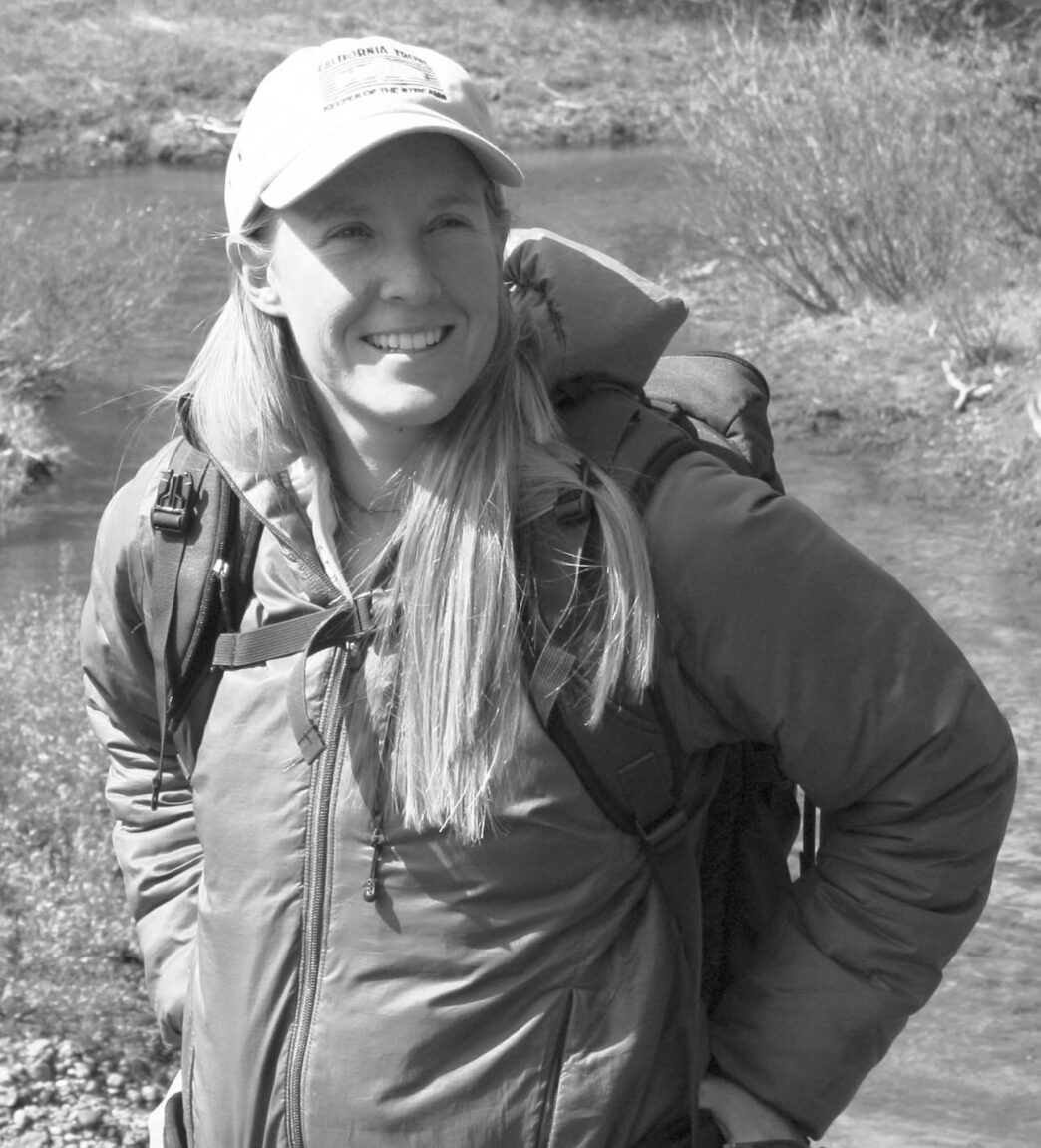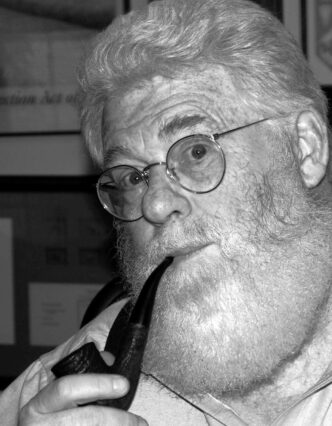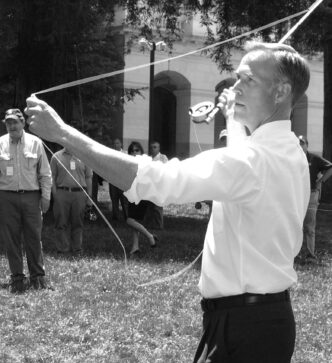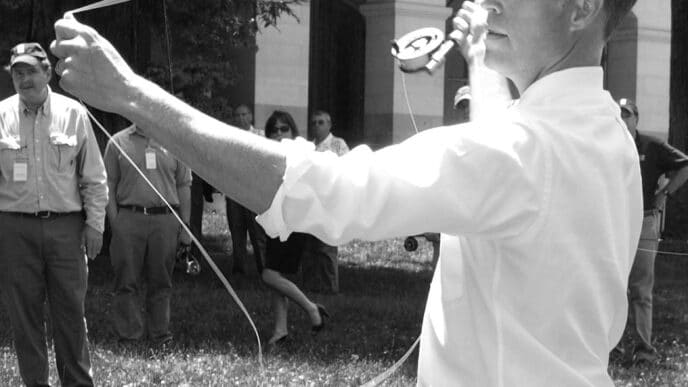Fisheries advocates tend to fall into two camps: those who believe that the passion of volunteers leads to the best results for sustained fisheries protection and those who believe that only through the day-to-day efforts of paid staff can adequate protections be achieved and maintained over the long run. (Actually, there’s a third camp, those who believe in using whoever you can, however you can.) California Trout, initially established in 1971 by anglers in an effort to restore and protect California’s trout species and their waters, today employs a staff around the state, with regional offices covering the eastern Sierra, the Mount Shasta area, and Northern and Southern California. Each regional office works to identify conservation goals and priorities for its area and to engage local communities and stakeholders to collaborate in developing and implementing long-term solutions.
In January 2009, CalTrout opened its newest regional office in South Lake Tahoe, hiring Jenny Hatch to staff it. Jenny has worked in natural-resource protection in the Truckee River and Lake Tahoe watersheds for nine years, and now that she’s been on the job with CalTrout for slightly more than a year, it seems appropriate to learn her priorities and interests. The interview was conducted via e-mail by editor Richard Anderson.
Richard: Jenny, why has California Trout hired a staff person for the Tahoe region?
Jenny: California Trout opened their Northern Sierra office in South Lake Tahoe in January 2009. California Trout’s board of directors deemed a Northern Sierra office to be important because of the key fish species and waters found in this region, such as the Paiute and Lahontan cutthroat trout and iconic waters such as Lake Tahoe. Thus, our board actively sought private donations to raise a three-year funding base for a regional director and office operating costs prior to opening to ensure long-term success.
From a geographical standpoint, California Trout’s Northern Sierra Region is an area that is bound by the upper Feather River system to the north, the Carson drainage to the south, the Nevada border to the east, and the foothill rivers (such as the American) to the west. The priority waters in this region include the Truckee River, the East and West Carson Rivers, Sagehen Creek, Prosser Creek, Independence Creek and Reservoir, Martis Lake, and Lake Tahoe and its tributaries. However, as the office matures, CalTrout hopes to expand its focus to include the other highly important water systems within the region, such as the rivers on the west slope of the Sierra.
Richard: What are your objectives in the region, and how do you plan to attain them?
Jenny: My work-plan priorities are based on CalTrout’s commissioned report by U.C. Davis, State of the Salmonid: California’s Native Fish Crisis. Key species for action include the Lahontan cutthroat trout, Paiute cutthroat trout, moun-tain whitefish, Eagle Lake rainbow trout, and wild species when competition with natives is not a concern. Driving the region’s work for each species are sound scientific recommendations from the SOS report.
Some key projects on which the Northern Sierra office will be working this year include the following: Partnering with the University of Nevada, Reno, U.C. Davis, and Trout Unlimited to complete a Sierra-wide meadow-restoration assessment and prioritization for native inland imperiled trout such as the Lahontan cutthroat; leading Forest Service regional and water-management planning recommendations for aquatic resource preservation and invasive species prevention and elimination; partnering to secure further funding for key restoration and research projects; continuing to develop our Streamkeepers program to monitor the health of our local watersheds; engaging and educating the public about proposed fisheries and watershed improvement projects; rearing nongame fish for potential release back into local waters to enhance their dwindling populations.
In addition to these important projects, community members can look forward to a suite of exciting events this year put on by our office. An environmental educator training session for Trout in the Classroom/Project Wild is planned for March 13 in Incline Village, Streamkeeper monthly stream monitoring events will get kicked off on May 22 with the tenth anniversary of Snapshot Day, and many fly-fishing outings, water talks, and conservation and membership events will be announced for this summer and fall as the dates for them get closer.
Richard: What challenges have you had to face so far?
Jenny: The biggest challenge I have been faced with to date is having a large work area and being spread thin, since currently, I’m the only one on staff for the region. We will have some internship positions this summer that I hope will start to help with this, but it will take time to build our regional funding to expand our capacity. Richard: What role does the fly-fishing community play in attaining your objectives? How does CalTrout fit in with the work being done in the region by Trout Unlimited, the Truckee River Watershed Council, and other groups?
Jenny: When we founded our regional office, we looked into opening an office in Truckee, Tahoe City, and South Lake Tahoe. As part of doing this, we met with the Northern California office of Trout Unlimited in Truckee and the Truckee River Watershed Council and got their opinions on where to open up shop. They both encouraged us to open our office in South Lake Tahoe because there was very little fisheries advocacy being done in the basin and in the Carson River watershed. We continue to work with both organizations, other partners, and the communities along the Truckee River.
Currently, we are collaborating on restoration work at Independence Lake with the Watershed Council, along with watershed-wide water-monitoring and advocacy efforts. Trout Unlimited and CalTrout collaborate on many levels, as well. We are in the process of hiring to fill a jointly funded advocacy position in Sacramento, and we are beginning work on assessing meadow restoration for native trout throughout the Sierra. I am actively seeking partnership opportunities with local fly clubs. One opportunity is for the local clubs to partner with our Trout in the Classroom program. Our outreach coordinator is currently planning a Northern California Fly Club Symposium for mid-June.
To get involved or to find out more information about California Trout’s work in the northern Sierra, e-mail their regional director, Jenny Hatch, at jhatch@caltrout.org or phone (530) 541-3495. To learn more about California Trout’s work statewide, visit their website at www.caltrout.org or become a fan of California Trout on Facebook.















